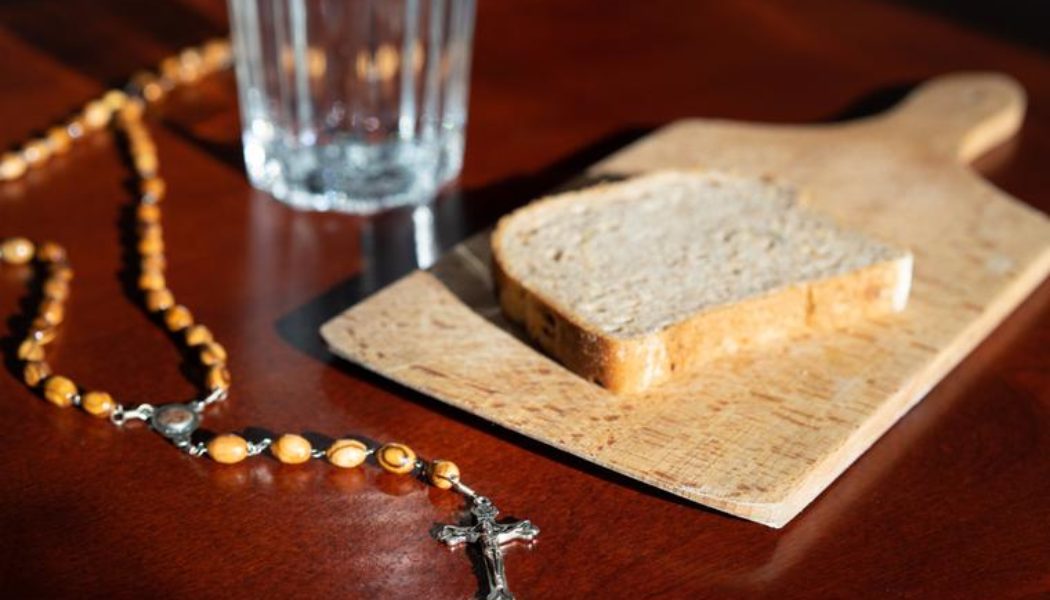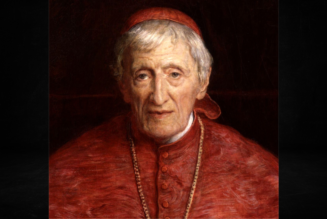
In a Nutshell
- Catholics in the 19th century were supposed to avoid eating for long periods and to abstain from certain food the vast majority of days during Lent.
- In previous centuries, the total number of fasting and abstinence days per year in the Church once topped 100.
- The Church has always recommended fasting and abstinence as penance for sin and armor against temptation.
- Some say the Church has lost something as fasting and abstinence have waned.
- One author recommends training your body through diet changes to make fasting less torturous while still an act of penance.
Has It Been a Tough Lent?
Consider how Catholics around seven generations ago lived it.
For many in the 19th century, Lent meant no meat, eggs, butter, cheese or milk, for 40 days. Nearly every day during Lent also was a fast day — meaning long periods of no eating.
Rules varied by time and place. But before the 20th century, Catholics generally were required to restrict their intake (fasting) or refrain from eating certain foods (abstaining) or both, not only during Lent, but also throughout much of Advent and on so-called Ember Days (four periods of the year of three days of fasting and abstinence), and on most Wednesdays and Fridays at other times of the year.
Earlier generations of Catholics also fasted on the eve of holy days. They celebrated every holy day of obligation (there were as many of 45 of them in the mid-17th century) as a spiritual and literal feast — and every day before the feast day as a famine.
When you do the math, you realize that, back in the day, Catholics were either fasting or abstaining for 100 or more days out of the year.
And their fasts weren’t like ours (one full meal and two smaller meals per day). An early Christian practice, for instance, was to eat nothing from Holy Thursday night to Easter Sunday morning.
“My grandmother, who was born in 1873, followed a pattern of fasting and abstinence that was much more rigorous than what I had to do after I was 21. But that was mild compared to what people did in previous centuries,” said Sister Patricia Byrne, a member of the Sisters of St. Joseph and a professor of religion emerita at Trinity College in Hartford, Connecticut.
Why have the rules changed so drastically? Author Jay W. Richards has an answer: “Death by a thousand dispensations.”
Fasting and the Church
The Church has always taught that fasting is a powerful and necessary form of prayer and penance.
Jesus fasted and gave instructions on fasting. The early-second-century Didache advised catechumens to fast before baptism — and told Christians under pressure to “fast for those who persecute you.” In 1741, Pope Benedict XIV (in Non Ambigimus) called fasting “this common remedy for us who sin daily.” On Ash Wednesday this past February, Pope Francis called fasting “not a quaint devotion” but rather a “spiritual training ground where we joyfully renounce the superfluous things that weigh us down, grow in interior freedom, and return to the truth about ourselves.”
St. Basil the Great, a bishop and doctor of the Church, wrote at least two sermons on fasting in the fourth century. During one, he acknowledged fasting is a hard sell and often dismissed as old-fashioned — even then.
“Fasting is an ancient gift, but it is not worn out and antiquated,” St. Basil wrote about 1,650 years ago. “Rather, it is continually made new, and still is coming into bloom.”
Yet for about as long as Christians have fasted, Christians have complained about it — and have been asking popes and bishops to let them off the hook.
“Christians have been backing away from the rigorous fasts of the early Christians for hundreds of years,” Richards writes in his 2020 book Eat, Fast, Feast: Heal Your Body While Feeding Your Soul — A Christian Guide to Fasting.
Training for Fasting?
Even so, the human body craves fasting.
Richards, a convert both to Catholicism and fasting, says the body is designed not so much for three square meals a day as variation — specifically, times of eating normally, times of eating nothing, and times of eating large quantities. (Thus the “Eat, Fast, Feast” title of his book.)
He also maintains that most people in previous centuries were better prepared physically for fasting than most Americans are today. They ate during short windows of time. They also ate far fewer carbohydrates, which quickly turn into sugar,and lead to intense cravings.
Thus, Richards offers in his book a six-week guide to training the body for fasting, which includes significantly limiting carbohydrates while increasing fat to promote a metabolic state known as ketosis.
“Fasting is a sacrifice. It’s not supposed to be a torture,” Richards told the Register, making a pitch for a diet that encourages burning fat for energy rather than glucose, which is what carbohydrates turn into. “That’s what this does. It allows us to experience it as something that you’re giving up. But you’re not working against your natural physiology.”
Unintended Consequences
If denying yourself food is a diminished art in the Catholic Church, some say that’s because it’s harder to go it alone.
In 1966, the U.S. bishops lifted the requirement that Catholics not eat meat on Fridays outside of Lent and Good Friday. At the time, the bishops said they hoped Catholics “will ordinarily continue to abstain from meat by choice as formerly we did in obedience to Church law.”
But what most Catholics heard was that the old rule was gone.
“I was raised Catholic, and I actually had never heard of the Friday meat abstinence until I was a doctoral student studying penitential practices,” said Maria Morrow, adjunct professor of Catholic studies at Seton Hall University, who was born a generation after the rule went away.
The bishops thought they were making improvements, she said.
“They clearly believed that the current fasting and abstinence practices weren’t that effective at aiding the spirituality of the people,” said Morrow, author of Sin in the Sixties: Catholics and Confession 1955-1975; and A Busy Parent’s Guide to a Meaningful Lent, in a telephone interview. “… I really think they had the best of intentions, that this sort of one-size-fits-all penitential practice had become a routine.”
Yet the bishops’ decision came at a time when many Catholics were moving from tight-knit parishes in cities to suburbs, where many embraced the wider culture more than they had before. Making penance more individualistic made it harder to do at a time when it was also looking less attractive.
“It moved it away from a social practice that was supported by a whole community,” Morrow said. “It’s very hard to be in an environment where you don’t have the support of a community. It’s different if everybody’s doing it all together.”
Reintroducing More Challenging Penance?
While the trend in fasting and abstinence has been less, some would like to see more.
In 2011, the bishops of England and Wales reinstituted the no-meat-on-Fridays-throughout-the-year rule, which the bishops there had lifted in 1984. The bishops said they thought “it is important that all the faithful again be united in a common, identifiable act of Friday penance,” because “the virtue of penitence is best acquired as part of a common resolve and common witness.”
“I can understand it,” Sister Patricia said in a telephone interview with the Register. “First of all, a common practice: You know, that Catholics in a whole country — observant Catholics, the ones who choose to follow it — are all doing the same thing. That gives a sense of solidarity, I think.”
The benefits of food-based penance can be generational.
Sister Patricia told the Register that her parents dated for six years during the Depression in the 1930s since they couldn’t afford to get married because her father couldn’t get a job. They used to go to novenas at a Redemptorist church in Pittsburgh called Our Lady of Perpetual Help. At one point, her mother promised God that if her fiancé got a job she wouldn’t eat meat on Tuesdays for the rest of her life.
He got a job. They got married in 1940.
Sister Patricia’s mother never ate meat on Tuesdays again.
“And she said to me, ‘And he never got laid off, either.’”









